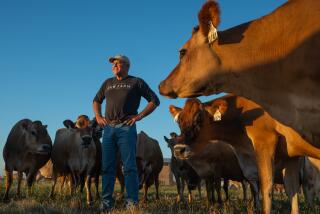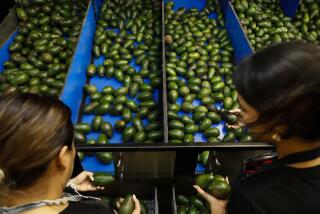Who’s watching what we eat?
The federal agencies that are supposed to safeguard the nation’s food have long resisted calls, including those from us, for merging into a single food authority. Amid the peanut-product salmonella outbreak, though, it’s hard to imagine how their objections can stand.
The Food and Drug Administration, in charge of produce and processed foods, had primary responsibility for Peanut Corp. of America, accused of knowingly shipping salmonella-tainted products that ended up in a list of foodstuffs almost too long to comprehend. But the FDA had contracted out the inspection work to Georgia’s food-safety agency. There has been criticism that the Centers for Disease Control and Prevention moved too slowly in analyzing the problem; meanwhile, the U.S. Department of Agriculture, which oversees foods sold for school lunches, also was looking into the Georgia plant.
Georgia’s inspectors failed at their job repeatedly. That doesn’t remotely exonerate the FDA, which learned in April, when Canada returned a shipment of foul goods, that there were signs of filth and disregard for public health. And the FDA bears responsibility for ensuring that its contractors are doing adequate inspections.
But then, the FDA itself, which oversees 80% of our food, hasn’t done adequate inspections for years. Farm fields are checked once in a decade. In addition, each food agency has multiple missions. The FDA’s drug-approval job tends to supersede its responsibilities for food. The USDA, which receives 80% of the food-safety budget, is supposed to promote the U.S. beef industry while protecting consumers from the worst meat and dairy producers.
Countries that have reformed their food-safety oversight -- Canada and Japan, for instance -- switched to a single agency. They also gave their food regulators more authority, and technology that allows quick tracking of food from farm to table. Yet such transformations won’t help unless the agency is properly funded and required to perform regular inspections.
The tainted peanut products, which have sickened hundreds and may have caused nine deaths, represent a new level of food outrage, more serious than even the salmonella salsa and downer-cow beef recalls of 2008. In this case, the plant’s management allegedly knew it was shipping food products that could kill, and then lied about it. The ongoing criminal investigation is an appropriate response; this should be treated as seriously as a multiple homicide. What, you might wonder, were these people thinking? Possibly that food inspection is so lax, and the responses to mass poisonings so predictable -- official indignation followed by complacency -- that nothing much would be done about it.
More to Read
A cure for the common opinion
Get thought-provoking perspectives with our weekly newsletter.
You may occasionally receive promotional content from the Los Angeles Times.










